The working world can feel bleak when employee turnover statistics pop into our news feeds alongside layoffs, rising prices, and stagnant wages. But you must resist; don’t give into despair.
There’s good news on the horizon, even if you’re looking at a higher turnover rate than you’d like.
That’s because there are ways for you to tackle employee turnover and create a more compelling place for all employees and new hires. This guide will help you get there, but first, we’ll look at the global state of attrition and turnover.
Burnout and a lack of support are some of the most prominent threads woven across industries and teams. They almost always play a role in the employee turnover rate. So, pay attention to the outcomes here and the threats you may face.
Boost your team’s efficiency with Hubstaff's productivity tools
General employee turnover statistics
This guide will look at the latest trends and data on turnover and the employee retention rate. We’ll give preference for employee turnover statistics from 2023 when possible, though some included research is from prior years. That helps us look at trends as large-scale patterns and understand when an issue might be a blip or a potential long-lasting concern.
While we’ve got stats in sections below to provide a more nuanced look at different concerns, industries, and team members, here are some current trends to help give you an overview:
- The average annual separation rate (voluntary and involuntary leaving) was 3.6% in 2023, down slightly from 3.9% in 2022, according to BLS data.
- People quitting make up roughly two-thirds of total separations
- Job openings reached a record high in 2022 in the US, then fell slightly, which could impact turnover and attrition rates
- Hiring is slightly outpacing total separations
- It is more expensive to replace someone and now takes longer, an average of 44 days
- The average turnover rate for any industry is less than 20%, and voluntary attrition accounts averages about 13%
- High performers are now a top-risk category, with an average of 47% leaving their companies in 2022
- High performers are up to 400% more productive than average staff
- 38% of people quit within the first year at a job, and 40% of this group do so within 90 days
The average turnover rate will depend on your organization’s size, industry, and employees. We’ll look at that more closely in a moment. For now, it’s essential to consider how these statistics point to employee morale issues that go far beyond average salary or career growth.
Employee turnover statistics paint a potentially dire picture if companies fail to invest in their teams, people, managers, and culture.
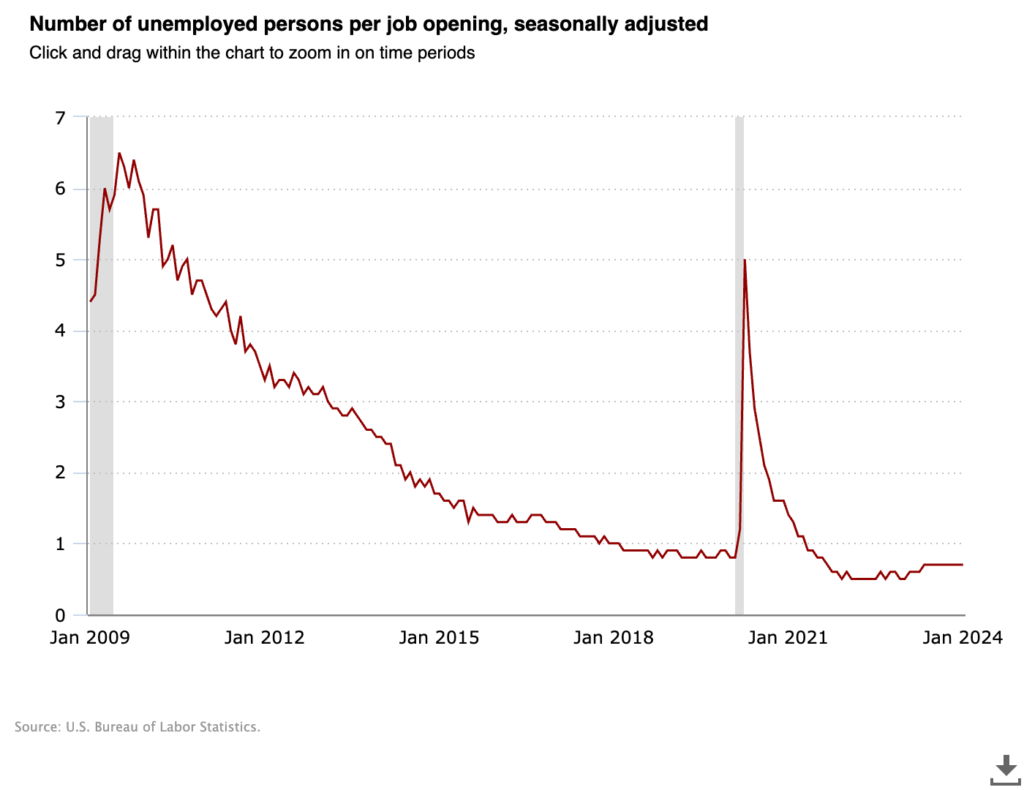
Employee turnover by industry
Industry-specific employee turnover statistics will vary wildly — where the tech sector is at the top with more than 13% while state and local government staff are at less than 1%. However, you may also find different rates and concerns when different data sets are used for the same industry.
We’re relying on data whose methodology is consistent and studies with high volumes of citations by significant publishers, audit firms, and other bodies.
If you’re trying to contextualize your retention rate, look at your region and industry. For companies with large remote workforces, begin with your geographic areas with the highest wages. You may see different trends in the countries where your people work but know that your competition in higher-wage areas may poach your lower-wage team members.
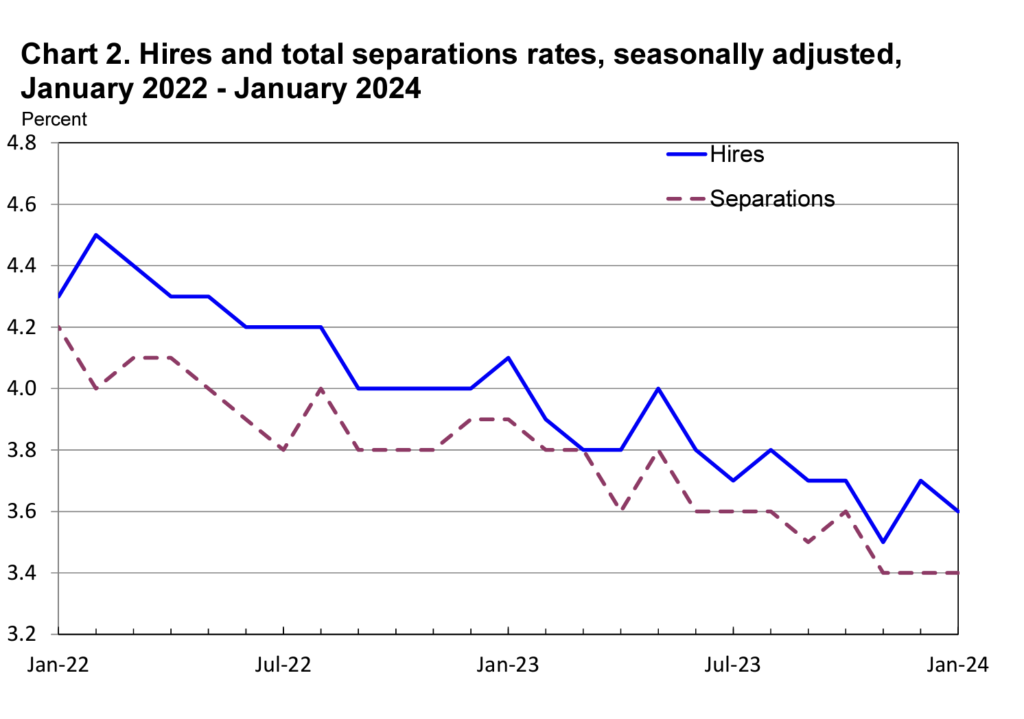
Tech industry employee turnover rates
The tech industry is a hard place to find reliable employee turnover rates because it regularly uses layoffs and firings to control costs and boost stock values. For the second year in a row, tech companies laid off more people than after the dotcom bubble burst. Tech layoffs increased more than tenfold from 2021 to 2022.
Last year, the tech industry laid off roughly 720 per day. This year, that rate has risen to more than 780 layoffs per day. Voluntary turnover data is difficult to parse here due to the number of these layoffs.
Potentially, because of that stress and volatility, tech companies often have among the highest turnover rates. In 2022, the industry had an average 13.2% turnover rate, even higher than retail companies.
LinkedIn’s data review also notes that areas of high demand and compensation have high layoff rates and high turnover. The gaming side of tech had a 15.5% turnover rate in 2022 but also had very large layoffs, which LinkedIn said was at least partially associated with industry losses after the pandemic years.
Retail industry employee turnover rates
People working in retail and consumer product companies also have high employee turnover rates. The industry average is about 13%, covering a broad set of businesses and professionals. Retail numbers also tend to include seasonal jobs and companies that scale up and down significantly throughout the year.
Within this group, some businesses are at greater risk of churn:
- Retail sales: 19.3%
- Restaurants: 17.2%
- Hospitality professionals: 17%
- Retail (total): 16.2%
- Sporting goods: 14.8%
We’re waiting to see if the industry finds an equilibrium in retail sales during the coming years. Our shopping habits have shifted online, and there’s a chance that retail sales may become more consistent across the months thanks to e-commerce.
Health care industry employee turnover rates
Unfortunately, the health services industry in the US and many other countries has not recovered from the pains of the pandemic. Many sectors remain chronically understaffed. This then puts pressure on remaining professionals, leading to high turnover and burnout rates. Budget variabilities and inconsistencies — some associated with the high cost of rehiring — also make it more difficult for hospitals and private practices to maintain adequate staffing levels.
Here are some critical employee turnover statistics from the health services and care industry:
- The US national hospital turnover rate is 22.7%, down by 3.2% from 2022
- Nursing has a vacancy rate of 15.7%
- The average US hospital lost $8.55 million due to turnover expenses in 2022
- The turnover cost per nurse was more than $52,000
- It takes 90 days on average to fill a vacant hospital position
Beyond burnout and risk associated with the pandemic, the US market faces difficulty because of hire retirement rates, reduced employee wellbeing, demanding shifts with little flexibility, minimal career advancement opportunities, and 80% of those who leave say they don’t feel appreciated.
Impact of age group and other factors
Employee turnover rates also vary by different employee characteristics and demographics. Only a few studies make these comparisons on a large basis, and the context can be challenging.
To build as good of an understanding as possible, we’ll use a slightly different metric in this section: tenure. Employee tenure is how long wage and salary team members are expected to stay with their current employer. This study attempts to hold tenure consistent while factoring in things like age profile among co-workers, layoffs, and other personal characteristics.
Here’s what it found:
- The median employee tenure for men is 4.3 years
- 28% of men have been with their current company for 10 years or more
- The median employee tenure for women is 3.8 years
- 26% of women have a current tenure of 10 years or more
- Public sector employees have an average tenure of 6.8 years
- Private sector employees, who tend to be younger, have an average tenure of 3..7 years
- Employee tenure is generally higher as workers get older
- People working in manufacturing have some of the longest private-sector tenure (5.2 years), while hospitality has among the lowest (2 years)
- Professional managers tend to have among the highest tenure for occupation levels at 6.2 years
| Median employee tenure by age group | |
| Age group | Median tenure (years) |
| All workers 16 and older | 4.1 |
| 16 to 17 years old | 0.7 |
| 18 to 19 years old | 0.7 |
| 20 to 24 years old | 1.2 |
| All workers 25 and older | 4.9 |
| 25 to 34 years old | 2.8 |
| 35 to 44 years old | 4.7 |
| 45 to 54 years old | 6.9 |
| 55 to 64 years old | 9.8 |
| 66 years old and over | 9.9 |
Source: BLS data
White workers tend to have the longest tenure, with 28% having been with their current employer, but they are also older. Some 23% of white workers are over the age of 55. When adjusting for the age of team members, tenure rates are reasonably stable across ethnic demographic groups.
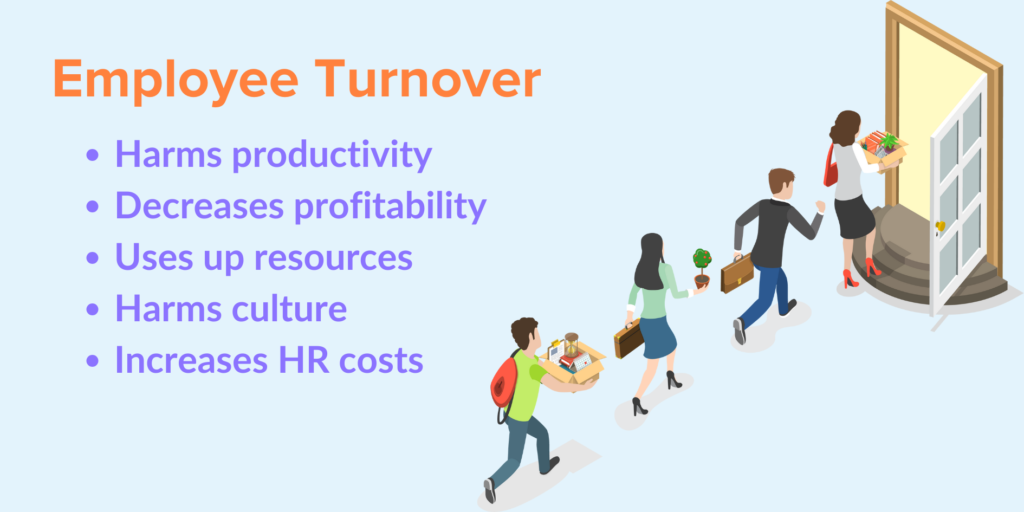
The cost of employee turnover
It’s worth noting that turnover can be very expensive.
Replacing an employee who quits usually costs between 33% to 50% of their salary in the immediate. However, some estimates say the total cost associated with turnover can range from 90% to 200% of that salary.
Turnover costs have a broad range because your organization has a lot of work to do for that replacement. You may immediately hire a temp or freelancer to take over tasks. HR then needs to spend time and effort onboarding these temporary employees while also looking to fill the vacant role.
You may face a cost for posting the job on many job websites and then need to account for time costs for HR, managers, and co-workers involved in any interviews. Other departments or professionals may support you as you run background checks, analyze budgets, and take other steps to prep for hiring.
Companies also face increased expenses or a reduction in revenue when someone quits. That’s because their workload is typically shifted to existing staff in some part, reducing productivity and increasing the resources your other team members need.
Factors contributing to employee turnover
For nearly as long as there’s been work, people have been quitting while others wondered why.
Unfortunately, no one has solved the attrition problem in a way that works for every company. So, professionals must still understand the risks and reasons behind turnover to address potential pitfalls proactively.
Here are a few of the top considerations according to this research review.
Low job satisfaction
Job satisfaction covers all the warm and fuzzy feelings people have about work. Sometimes, they like showing up and doing their tasks. For others, this is about security and providing for themselves or their family.
One of the studies reviewed notes that positive job satisfaction reduces turnover for every generation and demographic. However, younger generations build trust more slowly, while older generations are willing to wait longer to see if things change and satisfaction improves.
Interestingly, if you can keep younger team members satisfied, they tend to stay with their current company.
Employee satisfaction can also be improved by increasing workforce size, with more people at someone’s level able to share the burden.
A lack of career development opportunities
In 2022, one survey found that 33% of people who quit their jobs said it was due chiefly to a lack of career growth. An additional 30% of those leaving jobs said the lack of opportunity played a minor role in their decision.
People want a chance to grow, expand, and be successful. When it feels like work and tasks are in a rut, how do you expect your teams to feel any different about themselves at work?
One of the best ways to encourage people to stay and grow is to help them find and apply for internal opportunities. If your team members see an internal job that they want, but you don’t ask or don’t help them apply, it feels like you’re already telling them “no” and that they aren’t good enough for the role.
Work-life balance issues
Work-life balance plays a significant role in people staying or leaving their organization. We recently did a deep dive into the topic on our blog, but here are some key takeaways:
- Companies that offer a healthy work-life balance have 25% less turnover
- 95% of human resources professionals blamed the loss of good employees on job burnout
- 60% of employees around the world report having a healthy work-life balance
- 33% of employees with a positive work-life balance plan to stay in their current jobs
- 57% to 61% say that a negative work-life balance will stop them from taking a job offer
- 48% of people would leave a job if it prevented them from enjoying their life
- 67% of people say work-life balance improved once they began working remotely
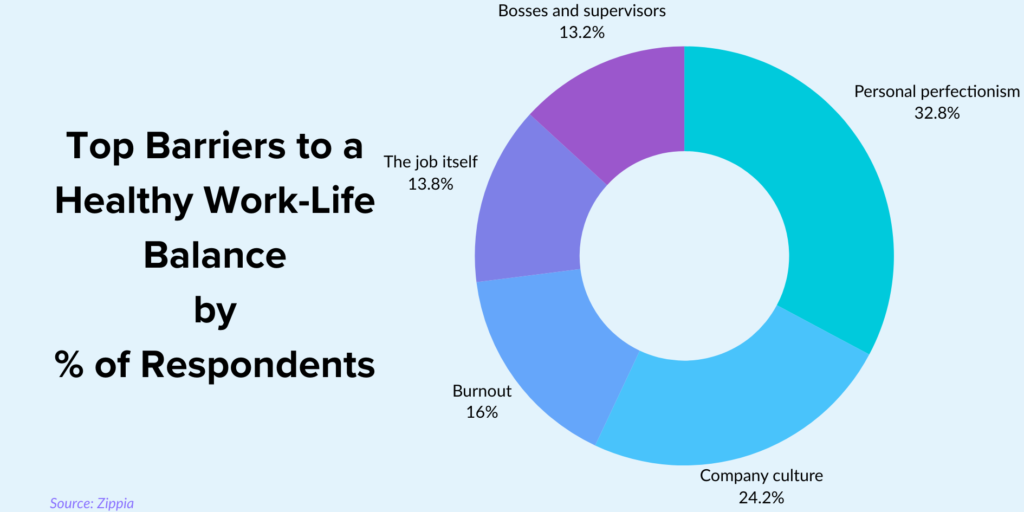
Management and leadership influence
You’ve likely heard some version of the saying: “People don’t quit jobs; they quit bad managers.”
That saying seems to stick around because it’s largely accurate. One recent report notes that 57% of people have left a job because of their manager or leaders. The reasons why can vary, but many boil down to:
- Managers being cruel, disrespectful, or belittling
- Managers not following the same rules, especially around things like when someone can take PTO or sick leave
- A lack of support and recognition for someone’s work
- Poor or hostile communication
- Micromanagement
Forbes’ data roundup notes that people who don’t feel supported are three times more likely to seek a new job. Employees who don’t receive recognition are twice as likely to quit, too. Managers and leaders may be the cause of your negative employee turnover trends.
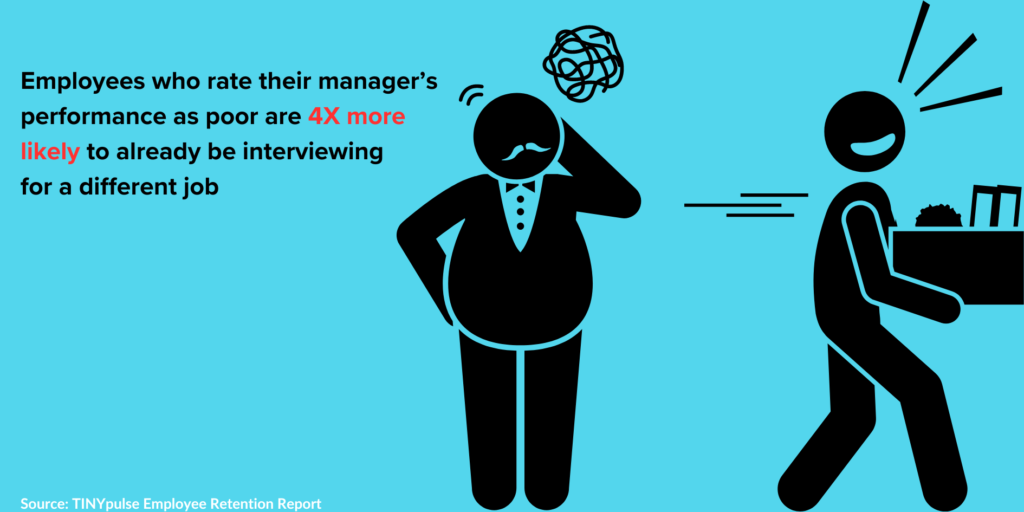
Strategies to reduce employee turnover rate
The employee retention rate shifts when companies need to or are already undergoing a change. Sometimes, this is a positive step, while other scenarios indicate an unhealthy industry or company.
A high employee turnover may signal that your people are in demand, and you need to compensate and appreciate them accordingly to keep them. If your industry is not booming, it may signal that managers or company culture are harming your people. In either case, there are some steps you can take to prevent unwanted attrition.
Recognize and reward
People want to do a good job at work. They also want their co-workers and managers to notice. Employee recognition is linked with increased productivity, morale, innovation, and job satisfaction. You’ve got multiple ways to thank and recognize your employees. Don’t let this fall behind.
Employee engagement can rise as you recognize people, too. It’s one of the most direct ways to reduce employee turnover.
Support internal mobility
Career development plays a core role in keeping or losing your best teams. And it may be among the more vital aspects because it holds more value than a $5 bonus or gift card. Recognition of someone’s capabilities involves making them integral to your operations, which should also include a promotion or a clear career track.
If you don’t enable people to grow with you, they’ll grow elsewhere.
Invest in skills and benefits
The path to growth is only half the battle. Your team also needs support to get to those big-picture goals or to have the skills to snag that promotion. Empower your employees by creating opportunities for professional development. Help them learn a new skill, take management courses, tackle the latest tech, and more.
When people are engaged and thriving with you, there’s less reason for them to leave for a company that might not offer the same growth opportunities. It’s an intelligent want to keep the employee turnover rate low.
Bring people in line with market rates
Compensation matters. It isn’t always the top reason people leave, but it can be a big one. If your team is far below market standards and realizes this, they may quickly head for the exits. You might not even get the standard two weeks of notice. If you’re not respecting their time — through wages and other efforts — people will be hard-pressed to find reasons to respect yours.
Get flexible
Got some great people you want to keep? Consider letting them work remotely.
If people want to work remotely and you let them, they’re less likely to quit. Simply shifting to remote work makes people 13% less likely to leave.
Surprisingly, the data notes your best option is to let people pick. When employees were given the chance to work as remotely as they desired, they were 32% less likely to quit than in-office staff. They were also more satisfied with their jobs than fully remote teams.
The struggle here is forcing people to work in a style they don’t want. For example, if you went remote but then pushed a return-to-office mandate, your workforce will experience a 14% increase in intent to leave.
Remote work may be your best way to tackle employee turnover and employee engagement concerns.
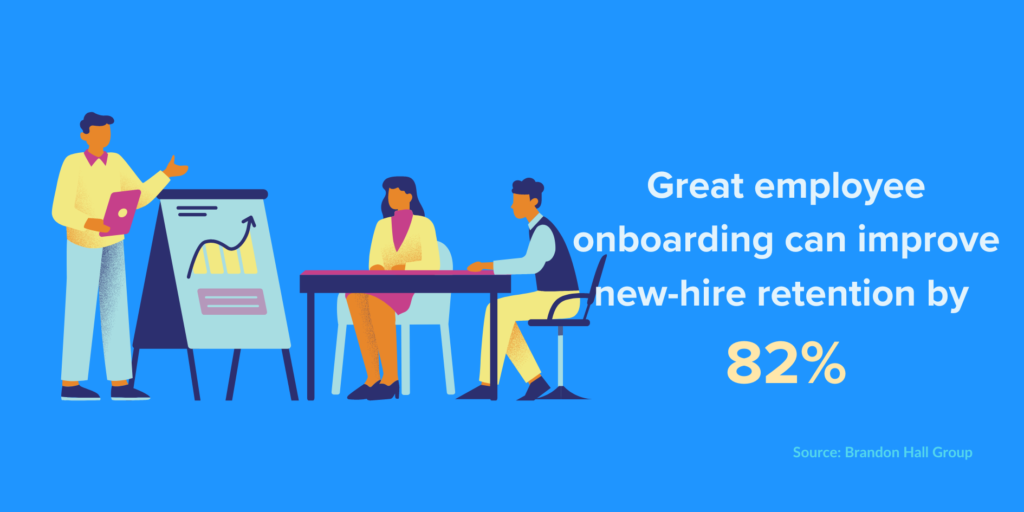
Start at the beginning: Onboarding and employee retention
We’ll leave you at the best place to think about employee retention: the beginning of your work with any employee.
Research tells us that organizations with a robust onboarding program improve the retention of new hires by 82% and even boost the productivity of those hires by 70%. When new employees feel like they had a good onboarding experience, they’re 18 times more committed to the new job than someone with a poor onboarding experience.
That same review says that negative onboarding experiences make new hires twice as likely to start looking for a different job. You can tackle voluntary turnover starting on day one.
Onboarding is your chance to share company culture with a new person. Give them opportunities to meet people across your organization and see how different departments work together. Invite the new hire into settings and situations so they can see and experience it immediately without getting a series of tasks.
In the remote space, this means reducing paperwork or adding time to the onboarding process so people can sit in meetings, watch videos, read your website, and more. Go beyond forms and look for ways to engage.
Plus, you have a captive audience. So, reinforce all of those steps above to prevent churn. Highlight stories of internal promotion, give examples of people using benefits, and have staff show their work-life balance and what happens when the computer is closed.
If you struggle to fill your onboarding with these elements, then you now know where to start improving your organization to reduce your employee turnover rate.
Most popular
The Critical Role of Employee Monitoring and Workplace Security
Why do we need employee monitoring and workplace security? Companies had to adapt fast when the world shifted to remote work...
15 Ways to Use AI in the Workforce
Whether through AI-powered project management, strategic planning, or simply automating simple admin work, we’ve seen a dramatic...
The AI Productivity Panel: Lessons From Leaders on What’s Working (and What’s Not)
When I moderated this AI productivity panel, I expected a solid conversation. What I didn’t expect was the flood of real-world i...
Employee Performance Dashboards: Templates, Tools, and Best Practices
Keeping track of how your team’s really doing can be tricky. Spreadsheets pile up, one-on-ones only tell part of the story, and...




